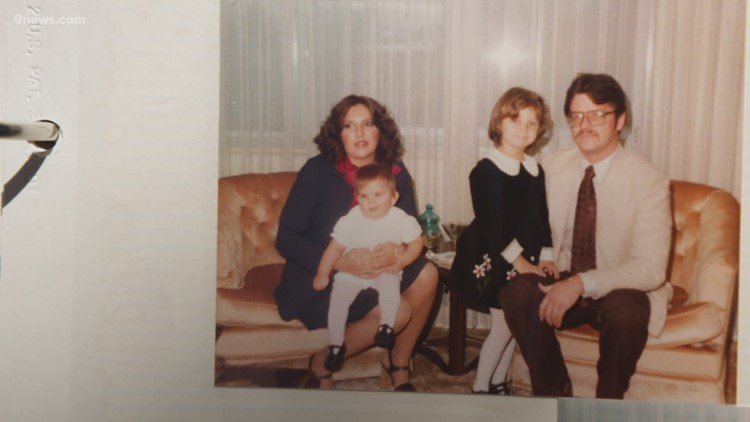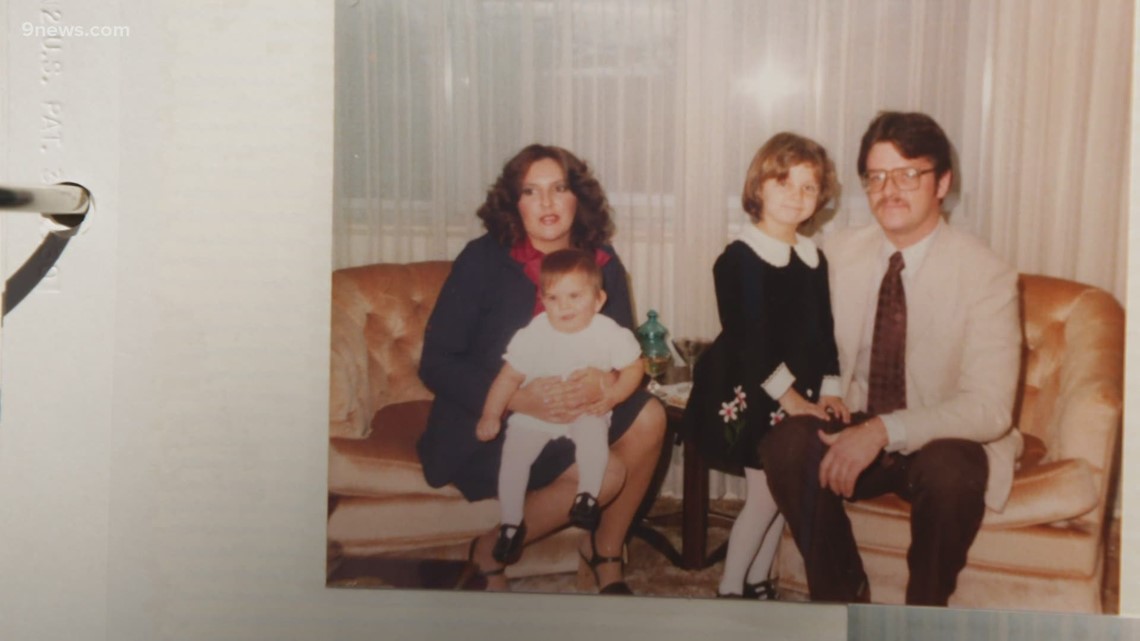
The defense team has argued that evidence collected and stored from the 1984 crime may have been compromised or contaminated over the years.
CENTENNIAL, Colo. — Not a single fingerprint recovered from the Aurora home where three members of the Bennett family were bludgeoned to death in 1984 was left by the man accused of the murders, an expert testified Wednesday.
Carolyn Barker, a former fingerprint examiner for both the Lakewood and Aurora police departments, told jurors in the trial of Alex Christopher Ewing that she spent time in 2018 examining 31 prints found in the family’s home in the 16300 block of East Center Drive.
Barker said none of those 31 matched Ewing, who is on trial on multiple counts of first-degree murder in the slayings of Bruce and Debra Bennett and their 7-year-old daughter, Melissa. The girl was also sexually assaulted.
Barker was the fifth witness called by defense attorneys Stephen McCrohan and Katherine Spengler during the seventh day of testimony.
Also Wednesday, with the jury out of the room, District Judge Darren Vahle explained to Ewing that he had a right to testify – and that he could even if his attorneys didn’t want him to.
“I already made a decision on that,” Ewing said.
“What is that decision?” Vahle asked.
“I don’t think I should testify.”
Vahle told Ewing he could change his mind up until the moment his attorneys rest their case – which could be later Wednesday or possibly Thursday.
“I appreciate that,” Ewing said.
The heart of the case against him is DNA found on the carpeting beneath Melissa Bennett’s body and a comforter that partially covered her.
That DNA, the jury has been told, was extracted from sperm and matched to Ewing in 2018.
McCrohan and Spengler have repeatedly questioned the way police handled and tested evidence in the case and have suggested that the actual killer has not been identified.
Among that evidence is the fingerprints.
RELATED: Bennett family murders: Jurors hear about DNA evidence
Barker told the jury she began by going through the unidentified fingerprints from the Bennett home to make sure they were suitable for comparison. Then she compared each print to Ewing’s fingerprints.
That included prints from the handles of a faucet in the master bedroom – which defense attorneys have suggested were used by the killer to wash up – as well as the front door, two beer cans, a lamp in the bedroom of Melissa and her sister, Vanessa, and other locations in the home.
Barker, under cross-examination by prosecutor Garrik Storgaard, acknowledged that not everyone leaves fingerprints.
“There are several reasons for this,” she said. “One of the primary, of course, if somebody at the scene is wearing gloves, they are not going to leave prints.”
Barker also said weather could play a factor.
“If it is cold – very cold and so forth – and the person’s cold, their pores tend to close, and they wouldn’t or shouldn’t leave any prints.”
The day the bodies were discovered – Jan. 16, 1984 – there was snow on the ground outside the home.
RELATED: Biological evidence found inside Bennett home center of testimony Friday
Finally, Barker said prints may not be left on porous surfaces – such as clothing.
In addition, the judge read the jury what’s known as a “stipulation” agreed to by prosecutors and defense attorneys. The two sides stipulated that an expert witness in fingerprints also concluded that none of Ewing’s prints were found at the Lakewood townhome where Patricia Louise Smith was raped and murdered the week before the Bennett killings.
Specifically, according to the stipulation, nine prints recovered in the home – from a calendar, a door, a phone, a car parked in the garage, a refrigerator, and a wall – were not Ewing’s.
Those comparisons were conducted in February 2019 and again this February. The stipulation provided no information about why that fingerprint examiner was not able to testify in person.
A judge in the case ruled that the jury could be told about Smith’s killing for limited purposes – “proving identity, for showing modus operandi and common plan, scheme, or design, and to refute any defense of mistake or accident as associated with the DNA evidence.”
In other testimony Wednesday morning, an investigator with the Office of the Colorado State Public Defender told jurors about her examination of evidence in the Smith case – and problems she found.
“Some of the packaging, it was old,” investigator Marjorie Erickson told the jury. “Some of the tape was coming off. Some of the items it appeared had been damaged over the years. Some had moisture damage.”
Jurors were shown photos of bags – some paper, some plastic – where she identified problems. Several had tears, including one with a vial of blood protruding out the side. One was stained with an unknown substance. One appeared to have fire damage.
It followed other similar testimony that hit at the assertion that evidence in the case has been compromised.
Ewing, 60, was identified as a suspect in the Bennett and Smith cases after a DNA hit in July 2018.
At that time, he was still serving a 110-year sentence for a late-night ax handle attack on a couple in Henderson that occurred about 7 months after the Bennett murders.
The hit came after Nevada prison officials started obtaining DNA from inmates and adding it to the FBI’s national database, known as CODIS. It was there that it was matched first to the Bennett murders and then to Smith’s killing.
Ewing is scheduled to go on trial in Smith’s murder in October in Jefferson County.
RELATED: Jurors hear about Lakewood murder linked by DNA to 1984 killing of Bennett family
Contact 9NEWS reporter Kevin Vaughan with tips about this or any story: kevin.vaughan@9news.com or 303-871-1862.
The story of the assaults, the search for a killer, and the anxiety that gripped the survivors and altered life in the Denver metro area is the subject of a 9Wants to Know investigative podcast.
“BLAME: The Fear All These Years” takes listeners back to the attacks and tells the stories of those most deeply impacted — the survivors and the loved ones of the dead. It follows the police investigation through years of cold-case frustration, forensic breakthroughs and the latest developments.
SUGGESTED VIDEOS: Bennett family murders













































